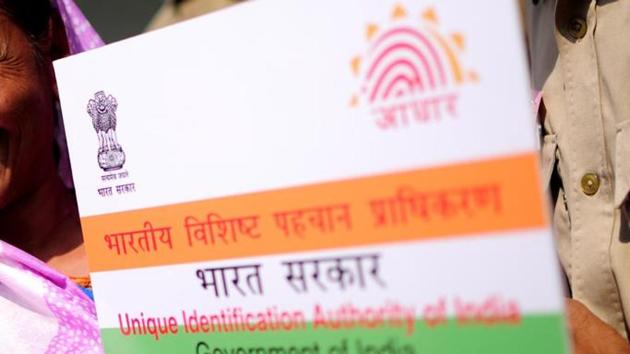Why Aadhaar infrastructure should be opened up for private innovation
There is very little motivation to improve the infrastructure when it only serves the poor who do not have a voice. Universal access and usage is needed to keep public service providers on their toes, as supporters and critics will be vocal about their demand from the infrastructure.
Aadhaar was designed to give a unique, digital identity to a billion people. But today, we are debating the identity of Aadhaar itself. There are many who want to tell us it’s a savings scheme, and then go on to tell us how it is an ineffective savings scheme. But as someone who had a part to play in the creation of Aadhaar, I can assert we always thought of it as a universal digital infrastructure, not just a scheme.

Because of this confusion, we have controversies that we would never have for other infrastructure projects. The government would never refuse building a highway because smugglers could potentially drive on it. No one said that we should destroy the highways because not everyone owns cars. Similarly, no one would ever say that if the government is building a highway, only State-owned vehicles should drive on it. The primary question we need to ask is: Is building this infrastructure with universal access in the greater public good or not?
In the case of Aadhaar, universal access is in the greater good for four reasons.
First, Aadhaar increases reach and inclusion where markets have traditionally failed. Take the example of mutual funds. Before Aadhaar-enabled eKYC was rolled out, the cost of doing a know-your-customer physically was roughly Rs 1,500. So it made sense to only acquire customers who could invest at least Rs 3,00,000. Today, we hear ‘mutual funds sahi hai,’ thanks to the lower-onboarding costs of eKYC. People can now invest in SIPs with amounts as low as Rs 100 instead of storing their money under their mattresses. In the last year alone, the mutual funds asset base of small towns went up 46% to Rs 4.1 trillion, decreasing our reliance on foreign capital and broadening the investor base dramatically.
Second, it is unfortunate that whenever the elite have seceded from government infrastructure to private schools, healthcare and transport, the corresponding public services have suffered. There is little motivation to improve the infrastructure when it only serves the poor who do not have a voice. Universal access and usage is needed to keep public service providers on their toes, as supporters and critics will be vocal about their demand from the infrastructure.
Third, whenever the State stops the production of public goods, the private sector steps in to fill the vacuum . Think about digital identity. The current most-popular providers of digital identity are global technology giants. It is their stated objective to know you better than you know yourself so that they can sell ads and products to you. In fact, these businesses are so profitable that they are able to cross-subsidise other services and offer them free, thus collecting even more of your data. Moreover, this data does not reside on Indian soil and is accessible to foreign governments. We do not have sovereignty over our own data and cannot decide what happens to it. Remember you are the product!
I would much rather trust the State’s institutions that have judicial and parliamentary oversight than the benevolence of data-driven businesses. While their objective is to create a smart, all-knowing ID, Aadhaar is designed to be the opposite: a dumb ID. It only shares your demographic details and a photograph with private players after taking your consent, instead of deep profiles about your likes, browsing patterns and desires.
There’s no doubt that we need to have strong privacy and security controls around Aadhaar. The need for security and privacy is not an argument against private access, it is in fact a great reason to allow universal access. Universal access also means universal oversight. The democratic checks and balances that we build to regulate private access will also regulate government actions.
This is not the first time that advanced technology infrastructure built by public money flourished when opened up to universal access. The US government was the only one who could create the satellite infrastructure necessary to create something like GPS.
It was originally only built only for the US Army’s use, but the receivers were costly. Today, US soldiers themselves use off-the-shelf cheap GPS receivers based on private market innovation. The same story is true of the Internet itself. Imagine if DARPA had kept the Internet to government use only and never opened it up for innovation by private players. The next time you tap on your smartphone and a cab miraculously appears at your door step in two minutes, remember it was because publicly funded digital infrastructure was made available for innovation and universal access.
Nandan Nilekani is former chairman of the Unique Identification Authority of India and is currently chairman of Infosys Ltd.
The views expressed are personal





